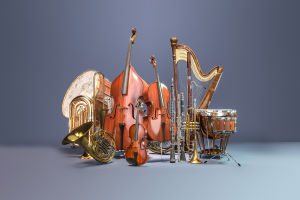Hey Lykkers! So you've got your eyes on a set of electric acoustic guitars and amplifiers. Whether you're just starting out or looking to upgrade your gear, this combo can seriously change your music game.
But what exactly is the deal with electric acoustic guitars, and how do amplifiers fit in? Let's break it down like friends chatting over coffee.
What's an Electric Acoustic Guitar Anyway?
An electric acoustic guitar is basically your classic acoustic guitar but with a bit of tech magic inside. It has a built-in pickup that captures the sound of your strings and body vibrations so you can plug it into an amplifier or sound system.
That means you get the warm, natural tone of an acoustic guitar—perfect for campfires, coffee shops, or jamming solo—but with the volume and effects options of an electric guitar
Why You Need an Amplifier
Sure, an electric acoustic guitar sounds great unplugged, but plugging into an amplifier takes your sound from "nice" to something that fills a room—especially if you're playing in front of others.
- Volume control: Amplifiers let you crank it up without losing that crisp acoustic tone.
- Sound shaping: Many amps come with built-in EQ, reverb, and effects, so you can tweak your tone until it's exactly what you want.
- Recording & gigs: If you're thinking about recording or performing live, an amp is essential to get your sound heard loud and clear.
How to Use Your Electric Acoustic Guitar & Amp Setup
Here's the lowdown on getting started:
1. Plug it in: Use a standard 1/4-inch instrument cable to connect your guitar's output jack to your amplifier's input.
2. Power up: Turn on your amp and start with the volume low—it's easy to startle your ears (and neighbors!) with a sudden blast.
3. Adjust tone: Play around with the bass, mid, and treble knobs to find a sound you like. If your amp has reverb or effects, try them out!
4. Tune your guitar: Electric acoustic guitars usually have a built-in tuner. Use it to make sure you sound perfect before jamming.
5. Practice: Try playing unplugged, then switch to amp mode to hear the difference. This helps you understand how your guitar's natural tone and amplified tone vary.
Tips for Getting the Best Sound
- Use quality cables: Cheap cables can add noise or reduce sound quality. Invest in a decent one—it makes a difference.
- Avoid feedback: Keep your amp and guitar facing away from each other or adjust the volume to reduce that annoying squeal.
- Experiment with placement: Your amp sounds different depending on where you put it—try on the floor, on a stand, or angled toward your ear.
- Play with effects: Don't be afraid to explore chorus, delay, or reverb effects if your amp has them. They can add richness and depth.
Final Jam Thoughts
Electric acoustic guitars and amplifiers give you the best of both worlds: that classic acoustic warmth combined with powerful, versatile sound control. Whether you're chilling at home, recording your latest tune, or playing live with friends, this setup can take your music to the next level.
So Lykkers, ready to plug in and rock out? If you want recommendations on good starter models or amps, or tips on caring for your gear, just hit me up—I'm here for all your music adventures!


